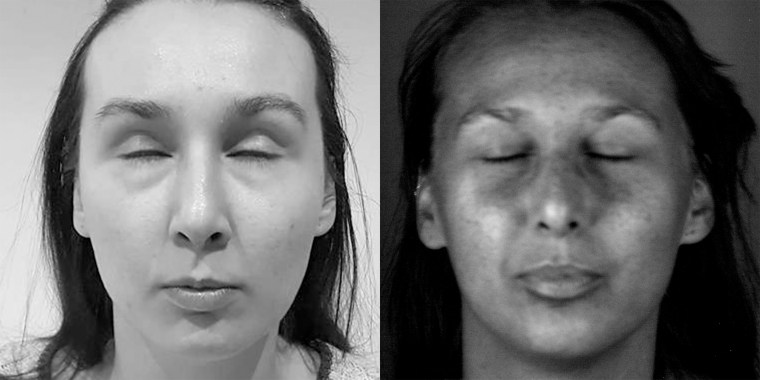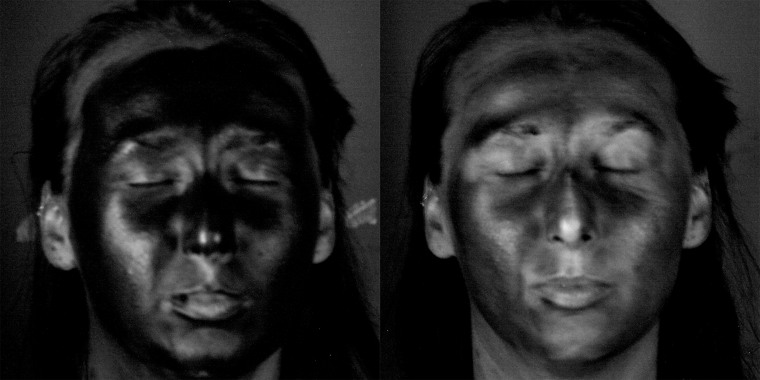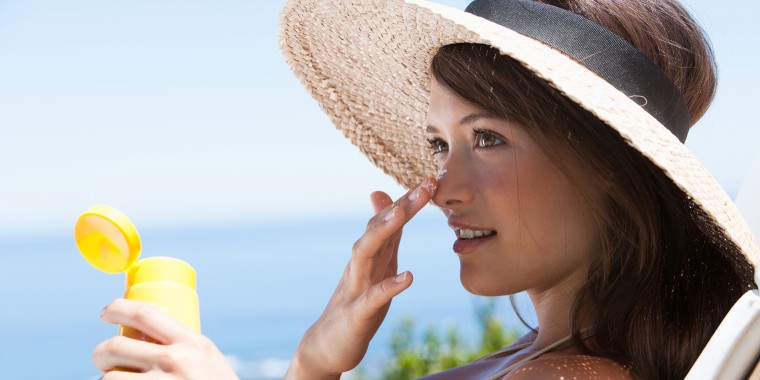Facial cream with sun block may not provide enough protection from skin cancer and user error is to blame.
People do a worse job applying an SPF moisturizer to their face than a traditional sunscreen, missing more skin, especially the region around the eyelids — an area particularly vulnerable to squamous cell carcinoma and basal cell carcinoma, a study published last year in PLOS ONE found.
The eyelid and medial canthal area — the corner of the eye closest to the nose — have the thinnest skin on the body and therefore less protection from ultraviolet light, said Dr. Austin McCormick, the study co-author, and an ophthalmic and oculoplastic surgeon at Aintree University Hospital in Liverpool, England.
Yet many people skip that part of the face when applying sunscreen without being aware of it, especially if they’re using a daily moisturizer with SPF added, the researchers found.
“We think that the stinging that occurs when creams seep into the eye may be a significant barrier to comprehensive coverage of the eyelids,” McCormick told TODAY. “(But) we do recommend SPF moisturizer and sunscreen for the eyelids and are not aware of any side effects with prolonged use.”
'Mistaken belief that the face is fully protected'
For the study, the researchers asked 84 people to apply a traditional SPF 30 sunscreen to their face during one visit, and a moisturizer with SPF 30 protection during another.

Photos of their faces were then taken with a UV-sensitive camera while they were exposed to UV-A radiation. Areas of the skin where SPF products were applied showed up darker on the images.

Analysis of the photos showed people missed almost 17 percent of the face when using an SPF moisturizer, compared to 11 percent when applying traditional sunscreen.
The difference was “primarily due to decreased coverage of the eyelid regions,” the authors wrote. Only five of the 84 participants covered the vulnerable corner of the eye during both visits.
When asked about their experience afterwards, the vast majority of participants were convinced they applied the products to all areas of their faces, suggesting their behavior was unconscious. It left them with “a mistaken belief that the face is fully protected,” the study found.
The authors don’t know why the SPF moisturizer wasn’t as well applied, but theorized that perhaps it wasn’t as spreadable as traditional sunscreen or that moisturizer is sold in smaller bottles, so people just use less of it.
Tips from the experts:
The eyelids are an at-risk area that should be covered with sunscreen as much as it is practical, McCormick said.
Other experts agreed. The eyelid skin is thin and can burn easily, noted Dr. Debra Wattenberg, a dermatologist in New York.
The findings show it may be necessary for doctors to actually walk a patient through how they should apply sunscreen, added Dr. Adam Friedman, professor and interim chair of dermatology at the George Washington School of Medicine and Health Sciences.
“I just ask if patients apply sunscreen to their face. I’ve never once asked about the eyes. This study is literally going to change my practice,” he said.
Still, stinging is a real issue. Many sun protection products, including SPF moisturizers, warn users to keep the product out of the eyes.
Wattenberg recommended being very careful and buying a separate product designed for this area. Stick products tend to work well, especially those with clear zinc, she said. Go for mineral formulations that just have zinc or titanium, and avoid chemical absorbers like oxybenzone, avobenzone, octinoxate — which sting the eyes, Friedman added.
The study authors still recommend SPF moisturizers because some protection is better than none, but if you’re planning a long day in the sun, use sunscreen as thoroughly as possible and wear a hat and UV filter sunglasses for extra eyelid protection.
And be on the lookout for any skin changes.
“If you notice a new bump or pimple-like lesion around your lids, be sure to have it examined by your doctor. Skin cancer in this area tends to be picked up late because patients don’t look at their eyelids,” Wattenberg said.
NBC News Health's Erika Edwards contributed to this report.





